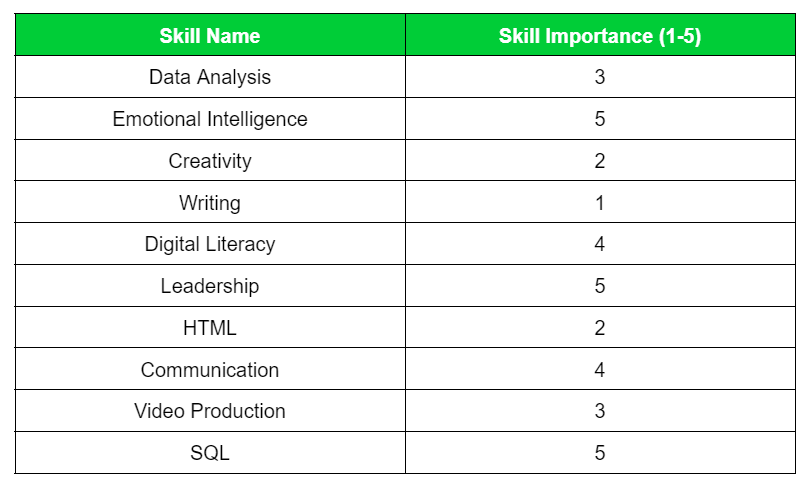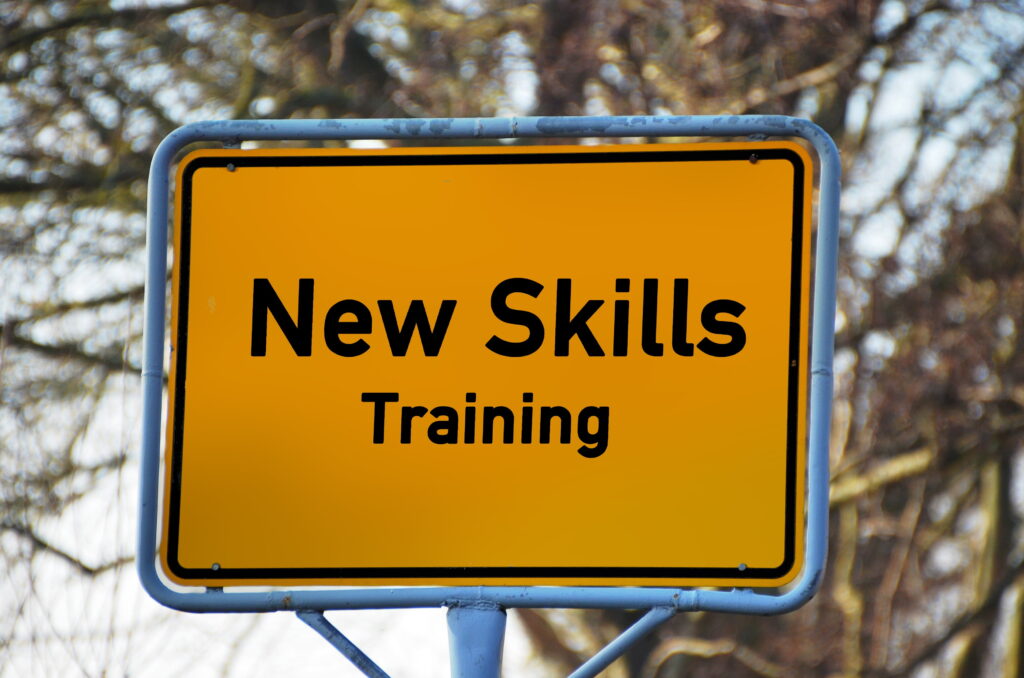According to authors John Seely and Peter Denning, the life of a learned skill is 10 years and in 10 years, the skills you picked become obsolete. This means after 5 years whatever skills you possess half of their value is already lost. Because of the prompt technological advancements, companies are always facing a challenge to cope with the changing customer expectations and also to upgrade their workforce. So if you think your team is underperforming then maybe it’s the right time for a skills gap analysis.
Now the question is how to perform skills gap analysis?
First, let’s understand what is the skills gap and what triggers it in the first place.
What is a skills gap?
When an employees’ current skill set isn’t aligned with the skills required to perform his/her daily tasks, then the employee is said to have a skills gap. If a company is aiming to serve clients that are demanding the services of the present time but the workforce is not able to meet their expectations due to the shortage of skills, then we can say that the company is experiencing a high skills gap. This in turn leads to customer dissatisfaction and increases the customer churn rate.
Simply put, a skills gap refers to the difference between the skills that are required to carry out the job with ease and the actual skills possessed by an employee.
Skill needed – Skill Possessed = Skills Gap
Skills gap analysis helps HR to gather the data from employees. Once HR has relevant data then they can plough through this data to figure out the areas of improvement. In the world of uncertainty, HR can use skills gap analysis for enhancing the worker-employer relationship.
What triggers a skills gap?
Chaos in the workplace occurs when a few things leading to the problem are unnoticed or ignored by the administration. The same is the case with the skills gap problem. When employees are not evaluated based on their performance, are not made aware of the skills they lack and are not redirected for upskilling or reskilling then the working style and skills of the employees become stagnant. You can use a performance management software to evaluate employees’ performance and skills assessment tools to analyze skills gaps.
Why Skills gap analysis is required?
Employee analysis both on an individual level and on the team level can give companies an edge over the skills gap problem. Analyzing each employee individually, finding their core strengths and the area where an employee outperformed the others, and then redirecting them in the same area results in more employee engagement and can bring in amazing results. Skills gap analysis has become an important factor as improvement in a company’s profit directly relies on developing the skills of individuals and the whole team.
The following can be the reasons for HR to perform a skills gap analysis
✅When there is a drop in an organization’s performance.
✅If an organization has recently introduced a new technology.
✅When an organization acquires a new client or a new project.
✅If there has been a transfer of employees within departments of the organization.
✅When new employees are hired.
✅If industry behavior has changed.
Benefits of Skills Gap analysis
- Building high-performing teams is a major benefit of skills gap analysis.
- Skills gap analysis improves the compatibility between peers.
- Another major advantage is that it helps in planning upskilling or reskilling for employees.
- Enabling the organization to be in line with its long-term business goals is another advantage of this process.
How to plan a skills gap analysis?
You need to perform a skills gap analysis on four levels:
➤Individual
➤Team or Project
➤Department
➤Organization
There can be two ways HR can perform this analysis.
One way is to do this manually by circulating google forms or questionnaires to the employees. The other is to use employee surveys software to get real-time insights for a full-fledged analysis.
First, let’s see the method which HR can do manually on their own.
Step 1. Identify the Current skill availability
Assess where your company stands in the industry and what is the skill level of your workforce by conducting skills-mapping exercises. You can also identify the skills that you need your employees to possess and assign importance levels to each skill
Perform a deep analysis and identify the skills that are required in your organization presently and concerning the scope of the skills in the near future.

In the table above, under the column named “Skill Name” write the skills identified by your need for the company and then rate them on a scale of 5. Where 1 is the least important skill and 5 is the most important skill.
If an employee lacks a certain skill but still completes the task satisfactorily then the rating of importance could be somewhere between 1 and 3 and can be tagged as non-critical but if an employee completes a task with no good outcomes then that skill is critical and should be rated 4 or 5.
Step 2: Gathering data
This second step of skills gap analysis includes collecting data from the workforce both for individuals and from their teammates. Once the skill importance table is ready, ask each person to evaluate themselves on each skill and ask their peers or managers to rate them as well.
This will give you a clear picture of what each employee thinks of themselves and what is their peers’ opinion about them. Therefore, boosting transparency among teams.
How is an employee’s view helpful?
By asking employees HR can get insight into what are the skills that the workforce possesses. Also, research has shown that when given a chance to express expertise and love for skills, an organization can help employees to be more engaged and productive. It’s a win-win situation for all.
Once you have reviews of both the employee and their peers then you have to go through employee evaluation. This step keeps both employees and employers on the same page.
Step3: Storing the data
You need to store and protect the data after you have gathered it. This will help you to track the growth of each individual in the workforce.
✔️Put information in a searchable database.
✔️Maintain a track record of each employee to perform a 360-degree analysis on Individuals improvement.
Step 4: Analyzing the Analysis
Once you have received all the information and preserved it, now is the time to analyze and plan the upskilling or reskilling for the employees.
Planning the upskilling or reskilling can be a very resource-exhausting task. However, it should be done carefully by focusing completely on the future goals of the organization.
Potential questions to ask before planning the upskilling and reskilling activities are as follows:
- What are the clients that the company currently holds?
- Who are the competitors?
- What are the expectations from each employee?
- Competitors are dominating using what technologies?
- What areas does the organization lack presence in?
- In which areas the company is losing its competitive advantage?
Once you have answers to these questions you should be able to mark the skills that are critical for the workforce to take your organization to new heights.

How to plan an Upskilling or Reskilling program?
While the task may sound daunting but a careful and data-driven decision can make this process fast and can bring exciting results in a short time.
1️⃣Identify Priority Skills And Areas
You can identify priority skills after gathering the data from the employee.
2️⃣Enroll The Team In Training Programmes
Invest in the best training courses available. Choose mentoring programs that are cost-effective and try to ask the employees which course they would like to enroll in.
3️⃣Utilize Experts
Depending on the skills, employees can be paired with experts in the organization who already have expertise in a particular skill.
4️⃣Assignments
Give employees assignments that are out of the scope of their current profile so that they can enhance their learning capabilities. You should also push them to take on new challenges.
Follow up and Track the Progress
After spending the company’s resources on upskilling and reskilling of the workforce the final output has to be measured. HR should ensure that there’s no wastage of companies’ resources. They should also ensure that spending resources for reducing the skills gap should help employees to gain new skills and improve companies’ performance.
You can measure this on the following parameters:
Were employees able to contribute to the companies success and bring more revenues after upskilling?
Do employees feel confident and motivated, did customer feedback improve?
How many employees felt flexibility in their career progression?
How can Technology help in Skills gap analysis?
Performing skills gap analysis manually can be an easy task for small-scale companies but for medium size organizations or large companies, it can be a very daunting task to do it all manually. Below are the suggestions of a few software which can help HR to do this work more efficiently and effectively.
Imocha.io
iMocha’s skills assessment solution enables you to identify skills gaps and training needs effectively, create effective learning paths, evaluate the ROI of your L&D programs
Edcast
Helps companies to drive Learning, Skilling, and Career mobility
PlayAblo
Accelerates staff readiness to make organizations market fast.
Entamo
Helps in Everyday alignment of the organizational, team, and individual goals. Personalized insights and nudges to drive power performance behaviors, engage, and empower talent development and skills.
Conclusion
So we have seen every aspect of a skills gap analysis and how we can perform it both manually and using the software. According to Gartner TalentNeuron™, 58% of the workforce will need new skill sets to do their jobs successfully. Their data shows the total number of skills required for a single job has been increasing by 10% year-over-year since 2017. Upskilling becomes necessary to encourage flexible industry progression and gain a better position than competition. Over to you now.



